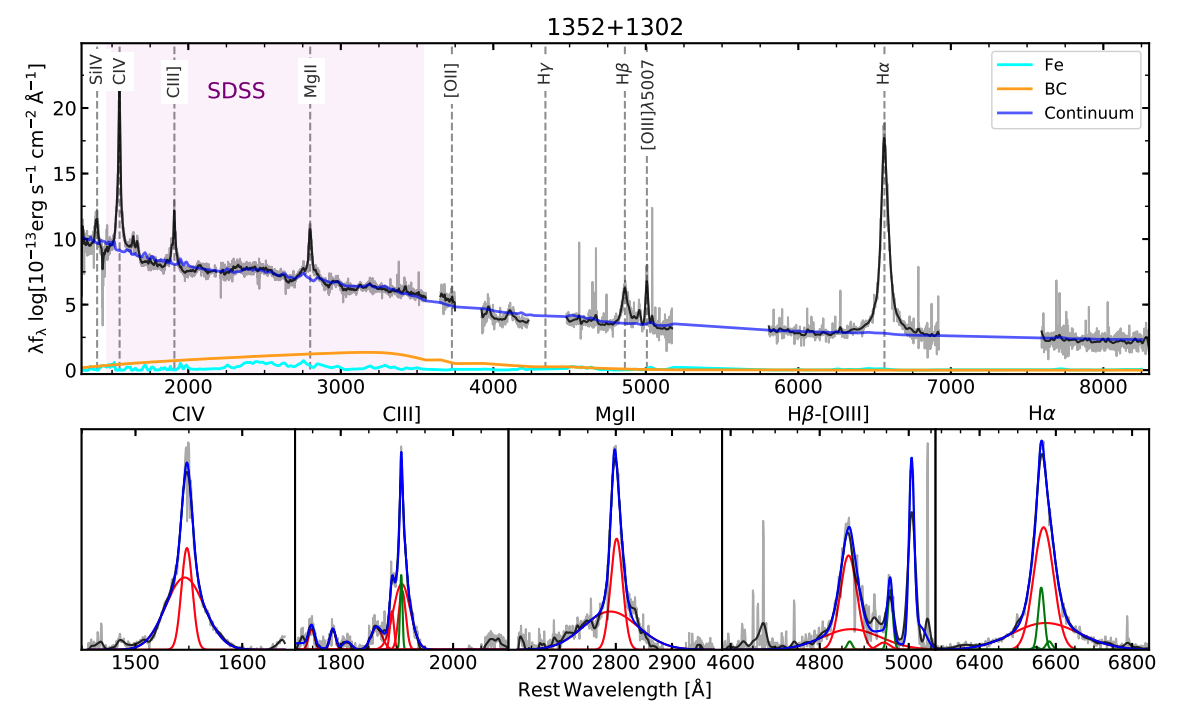CEA News, June 2022
Fundamental differences in the properties of red and blue quasars: measuring the reddening and accretion properties with X-shooter
Quasi-stellar objects (QSOs), also known as quasars, are the most powerful class of Active Galactic Nuclei (AGN), with extremely high bolometric luminosities. These high luminosities are now known to be due to mass accretion onto a supermassive black-hole (SMBH). The majority of quasars are blue due to an unobscured view of the SMBH accretion disc which peaks in the ultra-violet (UV). However, there is a significant subset of QSOs with redder optical-infrared colours (referred to as “red QSOs”). Although red QSOs have been well studied in the literature, the origin of the red colours is still debated.
 An example of the continuum and emission-line best-fit solutions for a single rQSO.
An example of the continuum and emission-line best-fit solutions for a single rQSO.
Astronomers at the CEA have recently found fundamental differences in the radio properties of red quasars when compared to typical blue quasars. A recent paper uses data from the X-shooter spectrograph on the Very Large Telescope, providing spectral coverage from ∼ 3000–25000 Angstroms, of a sample of 40 red and blue luminous quasars at 1.45 < 𝑧 < 1.65 to explore the connections between the radio, emission-line, and accretion-disc properties. Various dust-extinction curves are fit to the data and the authors find that dust reddening can fully explain the observed colours for the majority of the red quasars in the sample, with moderate extinctions ranging from 𝐴𝑉 ∼ 0.06–0.7 mags. They then find that a simple thin accretion-disc model can describe the continua of both the blue and red quasars, once corrected for dust extinction; also finding no significant differences in the accretion properties. Ionized outflows are detected in a number of red and blue quasars, but no significant evidence that they are more prevalent in the red quasar population is found. Overall the findings imply that the radio emission is more closely connected to circumnuclear/ISM opacity rather than accretion disc or outflow differences.

